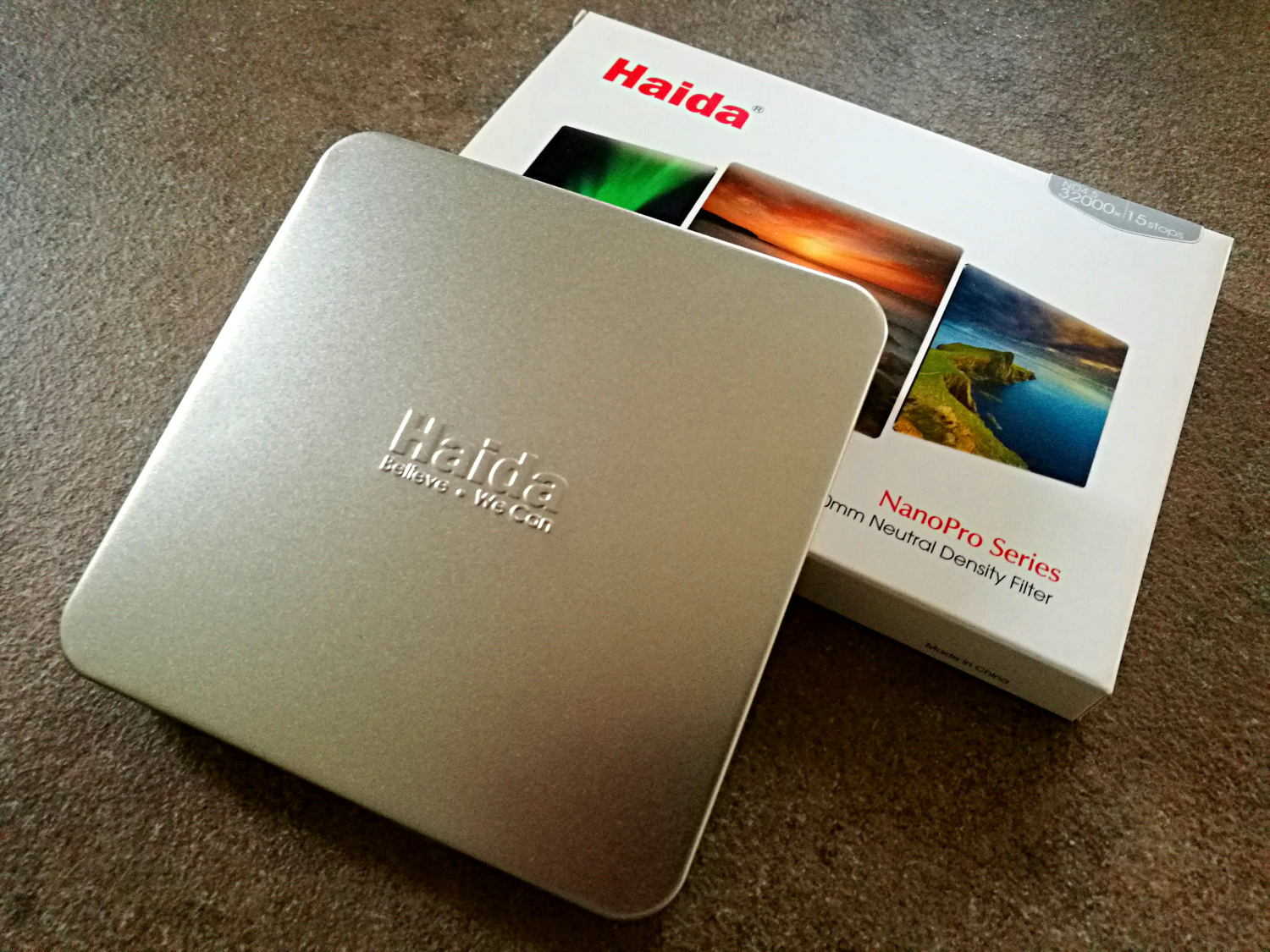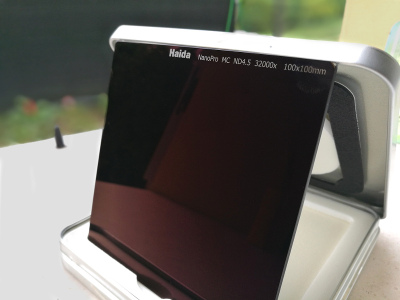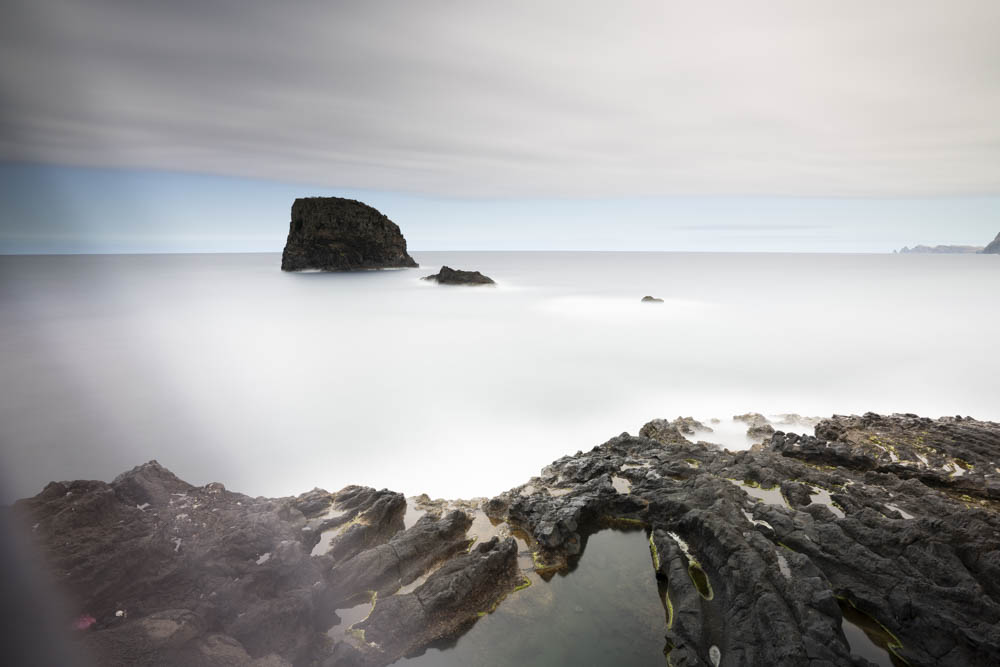Haida ND4.5 review
The review of the 15 stops Neutral Density filter, an incredible piece of gear from Haida
I shot since I was 14. At that time (I'm speaking about 30 years ago) I took pictures with a Ricoh film camera, and the cheap lenses that my student-empty wallet permitted me.
And since the very beginning, I've always been into long exposures. Yes, with films... when you were able to see the results only after waiting 10 days for developing the film.
So I think I may say that I observed (and went through) all the evolutions of this kind of photography, that for me is so fascinating!
From the beginning
Years ago it was quite normal to start with (and continue to use) slight dark glasses.. like ND8 or similar. Then, Lee Filters introduced the super famous "Big Stopper": a rampant euphory spreaded all around, and all the photographers started using this freakin' black filter. Yes, the Big Stopper was the "must have". All the reviewers couldn't wait to write articles about how good it was... especially when compared to the competitors (sad to say, I fell into the pitfall of Big stopper adoration too... ).
ND1000... 10 stops.. wow, what a dark glass! How many opportunities created...
(Lee filters were great for that moment...but honestly now we have to admit that they performed really bad, if compared with the great new players that jumped in the market in the last years, like Haida, NiSi or Kase)
Is the "big stopper" enough?
But there are times in which 10 stops are not enough; I know that all the landscape photographers literally go mad for the so-called "twilights" (namely sunsets and sunrises), when (together with great colors) the light fades out.
But as my dear friend Sal Virji says, long exposures can create magnificent conditions any time of the day! And, at the end, in full light an ND3.0 could be not dark enough.
Believe me, there are a lot of situations in which you can go for a long exposure in full light: for example, think about architectural photography! or b&w fine art (as teached by the great Julia Anna Gospodarou and Joel Tjintjelaar. Last but not least, think the endless opportunities to "remove" people with a long exposure from streets, squares etc
So, if you didn't try long exposures in full light, try and give 'em a try!
I started to stack my ND1000 (ND3.0 in Haida notation) with my ND64 (ND1.8) just to have longer exposures. Ok, it works... but inevitably this setup can introduce deterioration of image quality (double thickness, increased risk of flares and light infiltration, etc).
For this reason, I literally went crazy when Haida suggested me to test their ND4.5 filter. You read right... we are speaking about 15 stops!! Or, following another notation, ND32000... Can you believe it?!
In the past I tried the 13 stops Formatt-Hitech one (not the Firecrest, honestly), and the results were quite bad: the color casting was extreme, and the filter caused a dramatic loss in contrast. Absolutely a no-go for me... even if it could be ok for b&w only. So, I was very curious about the performance of this glass from Haida..
Unboxing
The filter comes in the usual box that Haida use for all his filters: a nice paper external box with a metal case inside, that protects the filter from all the bad things that could happen to a poor nice piece of glass.

Obviously, for the everyday usage, it is quite awkward to bring the filter around inside this metal case (especially if you bring with you many filters like me)... but for the shipping this protection is really great!
The filter comes without the usual gasket on (because Haida Pro-Holder already has an integrated gasket), but there is one spare inside the box, in case you want to use it on an holder of a different brand.
Like all the other filters of the same brand, the information are laser engraved over the filter in white fonts: it is quite easy to read them, even in low light condition. Moreover, it is possible to see the typical blue reflection of the Nano coating (the special treatment that makes the glass very resistant to water drops that can stop on the filter, and ensure great contrast and flare resistance).
On the field
To test this very very dark glass, I chose the beautiful beach of Ribeira Da Janela, in Madeira: an incredible spot, where a pebbles beach is dominated by a giant rock, facing the power of Atlantic Ocean. Stones and waves play outstanding light games, and clouds run fast in the blue sky.
Below you can find the two shots, exactly straight out of the camera. Camera settings are visible in the upper left corner.
No filter, 1/200s f/9 iso200
With Haida ND4.5 filter, 138s f/9 iso100
As you can see, I was able to shot in full light at 138s! Exactly, more than 2 minutes of exposure, this is a great result indeed!
We can make some calculations from the EXIF data, and it is possible to see that the filter seems to stop around 14.5 stops (15 stops is equivalent to 200s exposure). As I already stated in other articles, in my opinion it does not make sense to make very precise calculation for such long exposures: the light is very likely to change a lot during a so long exposure shot.. so it should be considered only as a rough estimation.
(for my personal experience, with white clouds it is always better to underexpose a bit, because white moving clouds are very likely to be overexposed..)
Here the Auto WB of my Sony a7R mk2 gave me 2 different values: for the original shot I had a temperature of 5000K, while on the long exposure I had 5650K ; as a result, the second shot seems to be a bit warmer (but it is only a matter of autoWB).
Below 100% crop: as you can see, no aberration is present. Furthermore, even at 100% crop it is not possible to see any deterioration in sharpness (remember we are speaking about a 42MP image!! )
no filter VS with filter
Let's see another shot, straight out of the camera, of the same subject:
Here again the image quality is superb, just a bit of difference in AutoWB.
Tips for using the filter
As Spiderman (well, Uncle Ben) once said, with great power comes great responsibility. Here the point is that we have to obsessively pay attention to light leakage and flares.
Passing from ND1000 to ND32000 is like shooting for the first time with an ND1000, coming from no filters shot: your first images will contain flares, reflection and bad artifacts; if your first shot will be something like this.. do not worry: the filter is ok, you only need to use scarf or black tissue to make sure you have no light getting inside the filter holder or the lens...

Buying the gear
I run this blog without any sponsorship from brands or manufacturers. This allows me to be unbiased and impartial. But of course it is a huge cost.
So please, consider to support my work buying your gear through these links: for you it is exactly the same price, for me there is a small percentage... Thank you very much!




